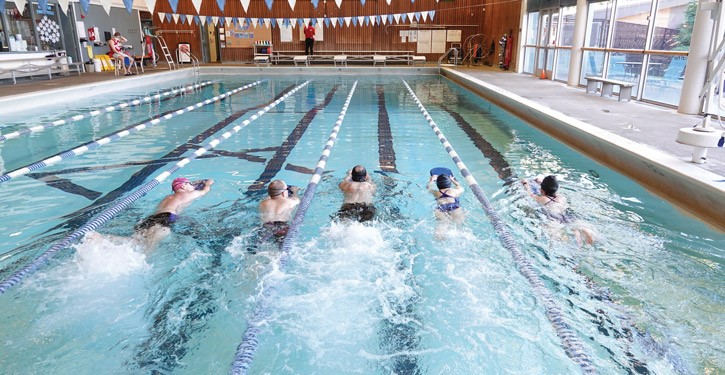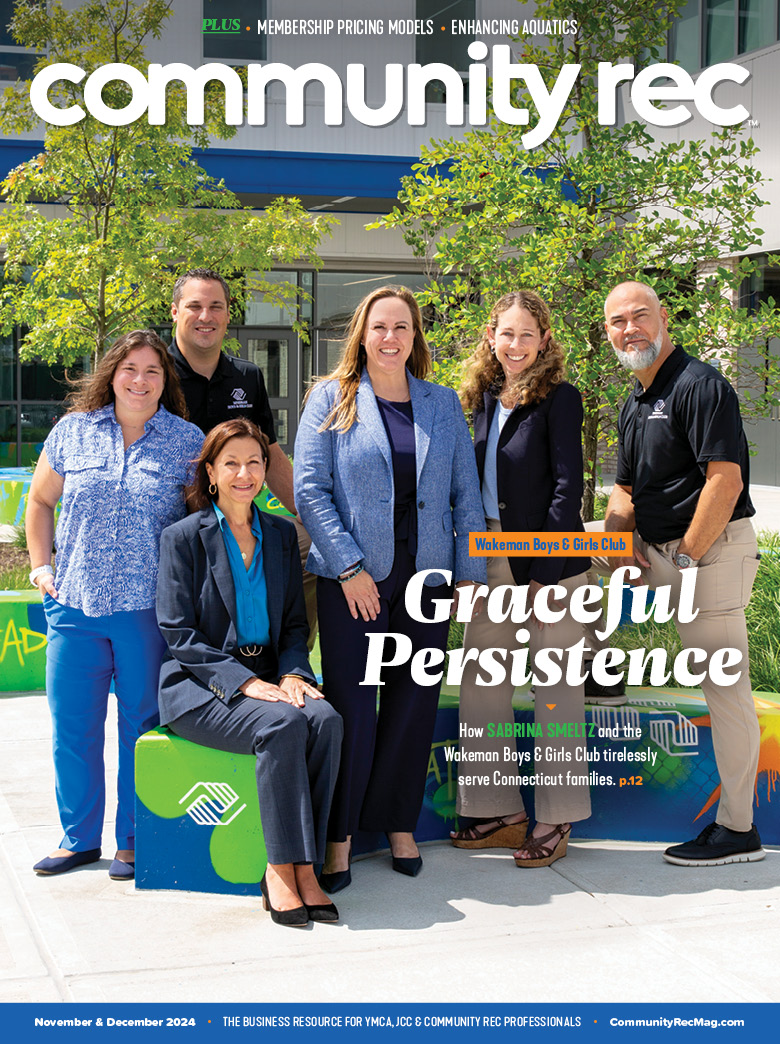Since 1995, Wesley King, the owner and founder of Wesley King Consulting, has trained over 3,000 lifeguards and provided valuable advice to countless aquatics facilities. When it comes to managing risk around the water, King said there are two areas every community rec center should focus on.
“First, it’s the human experience,” said King. “Two, it’s what they’re experiencing. For the past couple of years, the consumer hasn’t experienced the world in a normal setting. Understanding the individual and what their process is when using your facility is crucial. Think of different types of people and walk through their process. That does get daunting, but on a larger scale understand with your data and check-in system for who is using your property.”
This level of attention to detail is also seen at the David Posnack JCC where Julie Sevilla, the aquatics director, said she emphasizes with her lifeguards on constantly watching and keeping track of who is in the pool area.
“There are only two particular areas to come in and out of,” said Sevilla. “We cater to a lot of seniors here, so we need to be sure they make it down the steps. Kids have to be told not to run across the pool deck. We also instituted at the end of the summer all staff have to wear ID badges, and all members and non-members must have some form of ID on them or ID badges.”
For Sevilla and King, these measures are worth guaranteeing the safety of visitors — especially considering there are over 4,000 drowning deaths in the U.S. each year, according to the Centers for Disease Control and Prevention.
Intense observation of your facilities can certainly help improve risk management practices. However, King said it’s best to first eliminate tasks before adding to your checklist.
“A lot of people get caught up in preventing what I call the Three I’s — injury, illness and incidents,” said King. “I really look at that checklist and I don’t let that be the main thing. We have to follow through and ask the simple things. It sounds facetious, but people get stuck on checklists. If all I’m doing is just checking off a box after I complete a task, I will never actually understand how to do the work. Critical thinking is missing when we solely rely on a checklist.”
While problem solving skills are important, different types of checklists still help management keep tasks and protocols in order.
Sevilla said she’s very old school and has a large binder full of policies and action plans across different departments. For procedures pertaining to aquatics, she regularly tests her team.
“It’s a how-to and step-by-step chain of command, and we always practice, practice and practice,” said Sevilla. “I’m constantly communicating with our lifeguards through different avenues like WhatsApp Messenger. It’s free and it’s the easiest place for our group to communicate.”
One reason why Sevilla’s team practices so often is they are required to have monthly in-service trainings through the insurance company they use in the state of Florida. The trainings are done through the JCC’s American Red Cross certification.
“Most of my staff is in high school and they have a lot of engagements so I try and do training all at once,” said Sevilla. “Enforce the procedures among staff and visitors and educate them. In the end, you always want to cover the liability of the facility. Stick to your guns and preach it. I get the majority of our lifeguarding equipment primarily through The Lifeguard Store to help cover liability.”
Having well-trained and well-supplied lifeguards to help manage risk around water is also a top priority at the Mittleman JCC.
The aquatics area is full of fun offerings that must be managed. These include a six-lane lap pool, a warm water pool, swim lessons and an inflatable obstacle course for the main pool. Jennie Condon, the aquatics program manager and head swim coach, said one successful strategy they have is after COVID-19, they instituted 15-minute pool closures about every two hours to give lifeguards a break for assorted tasks that would take their attention away from the water.
“Like everyone in aquatics, we have struggled to recruit staff, and this allows us to keep our operations safe and our staff energized,” said Condon. “I think the key to safety is having a well-trained team among whom communication is prized and who know any given person, regardless of position, can always make a safety call.”
Condon said the rescue equipment is mostly supplied through Marine Rescue Products. However, they use a local company called The Pool and Spa House for operations and maintenance issues.
“Through our relationship with The Pool and Spa House, their techs have taught us many of the basic to intermediate fixes, and we keep spare parts on hand for a lot of the things that tend to give out more often,” said Condon. “If it’s not something we can fix ourselves, we call either our maintenance team or our Pool and Spa House techs. My staff are empowered to make the decisions they need to — even at times where I might have done things differently — to keep everyone safe. They also know if anyone complains, I will back them up.”
To create that level of successful team chemistry, it all comes back to King’s advice on paying attention to the human experience. And that starts at the head of every aquatics department with the aquatics director.
“We must continue to support aquatics departments,” said King. “Buy those directors lunch. They probably feel alone. If you are an executive reading this article, I can promise you as a 30-year veteran, they feel alone. You have to make the adjustment and support them. They are the ones in the weeds doing the hard work.”
Photo courtesy of Mittleman JCC.










